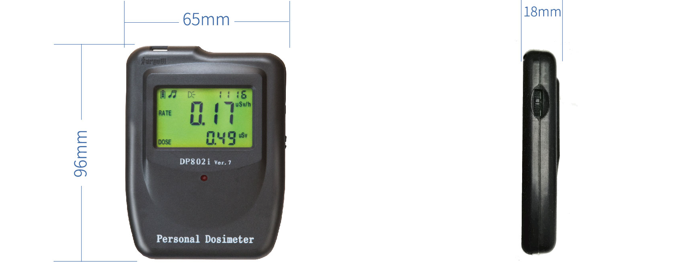On August 1, 2023, the American Academy of Oral and Maxillofacial Radiology published “Patient Shielding During Dentomaxillofacial Radiography” in the Journal of the Amerian Dental Association. The committee reviewed reports from many radiation protection organizations in regard to dental x-rays.
Here’s what they had to say: Scintillation Counter

“Considering the absence of radiation-induced heritable effects in humans and the negligible dose to the gonads and fetus from dentomaxillofacial imaging, the committee recommends discontinuing shielding of the gonads, pelvic structures, and fetuses during all dentomaxillofacial radiographic imaging procedures. On the basis of radiation doses from contemporaneous maxillofacial imaging, the committee considered that the risks from thyroid cancer are negligible and recommends that thyroid shielding not be used during intraoral, panoramic, cephalometric, and cone-beam computed tomographic imaging.”
In plain language, they haven’t found that x-rays cause genetic mutations or diseases, and the risk of thyroid cancer is very low, so they recommend that dental professionals stop using lead aprons and thyroid collars.
Spoiler alert: Don’t send it off for recycling just yet….
This is a huge shift for those of us who’ve been in dentistry for a long time. Gonadal shielding has been in practice for 70 years, and suddenly we’ve decided it's no big deal? Where is this shift in thought coming from? And you might be thinking, why not just use it? Better safe than sorry, right?
Have you ever taken a mandibular PA and ended up with some of the thyroid collar blocking the image? Or had a part of panorex obscured by the lead apron? Shielding can negatively affect the quality of our x-rays. If you have to retake an x-ray because the lead apron got in the way, you’re exposing the patient to more radiation.
Most of our units now have an automatic exposure control feature, which is very useful in achieving consistent x-ray film densities regardless of the patient’s size and density. However, this feature sometimes does not perform as intended if the lead shielding is in the path of the beam—meaning if the unit detects a lead apron, it will increase the amount of radiation to the patient, introducing more risk than benefit to shielding.
More trending topics by Amanda Hill:
The hygienist shortage: Will dentistry ever look the same?
Antibiotic prophylaxis for dental procedures: What's the right call?
I heard this a couple of years ago, and it got my attention. But as I dive into the research, all the respected organizations on radiation agree that lead and lead-equivalent materials used in lead aprons are very good at absorbing radiation. While a small amount can be reflected back to the patient, the dose is negligible. In fact, the only place I found this claim was in an article by Dr. Oz.
Even though all these associations and experts emphasize the risk to patients as negligible, providers still need to exercise caution when taking x-rays to limit their occupational exposure. If you are not in a position to maximize the distance between yourself and the radiation source, shielding is still recommended. That can include a leaded window or wall or a lead apron.
State laws and regulations set specific requirements for the use of ionizing radiation as well as rules for patient safety, so be sure to check your state requirements before ditching your lead aprons.
I reached out to my state board of dentistry in Virginia and was passed on to the Office of Radiologic Health. When I asked about lead aprons in dentistry, I was told they had not changed their guidance but were planning to meet soon to address the issue. I was then read the requirement, which states that gonad shielding of not less than 0.5 mm lead equivalent material be used during radiographic procedures in which the gonads are in the useful beam, and told I could interpret that as I chose. However, I was told emphatically that providers using handheld units need to wear shielding.
The American Association of Physicists in Medicine has a helpful FAQ with suggested talking points for patients and frequently asked questions. This is the first step in creating Communicating Advances in Radiation Education for Shielding (CARES) to educate providers and the public on this big change.
The bottom line is that technology has improved so much that the radiation we use to take an x-ray is extremely low and very focused. Lead aprons sometimes get in the way of seeing what we need to see, and that causes us to have to take the x-ray again.

X Ray Detector For patients who still insist on a lead apron, that’s up to you, the provider. Ensure the placement won’t block the area and the shield is not detectable by the unit. However, be aware that inconsistent use can give the impression to patients of a lapse in proper care. Clear communication is essential as we adopt this change.